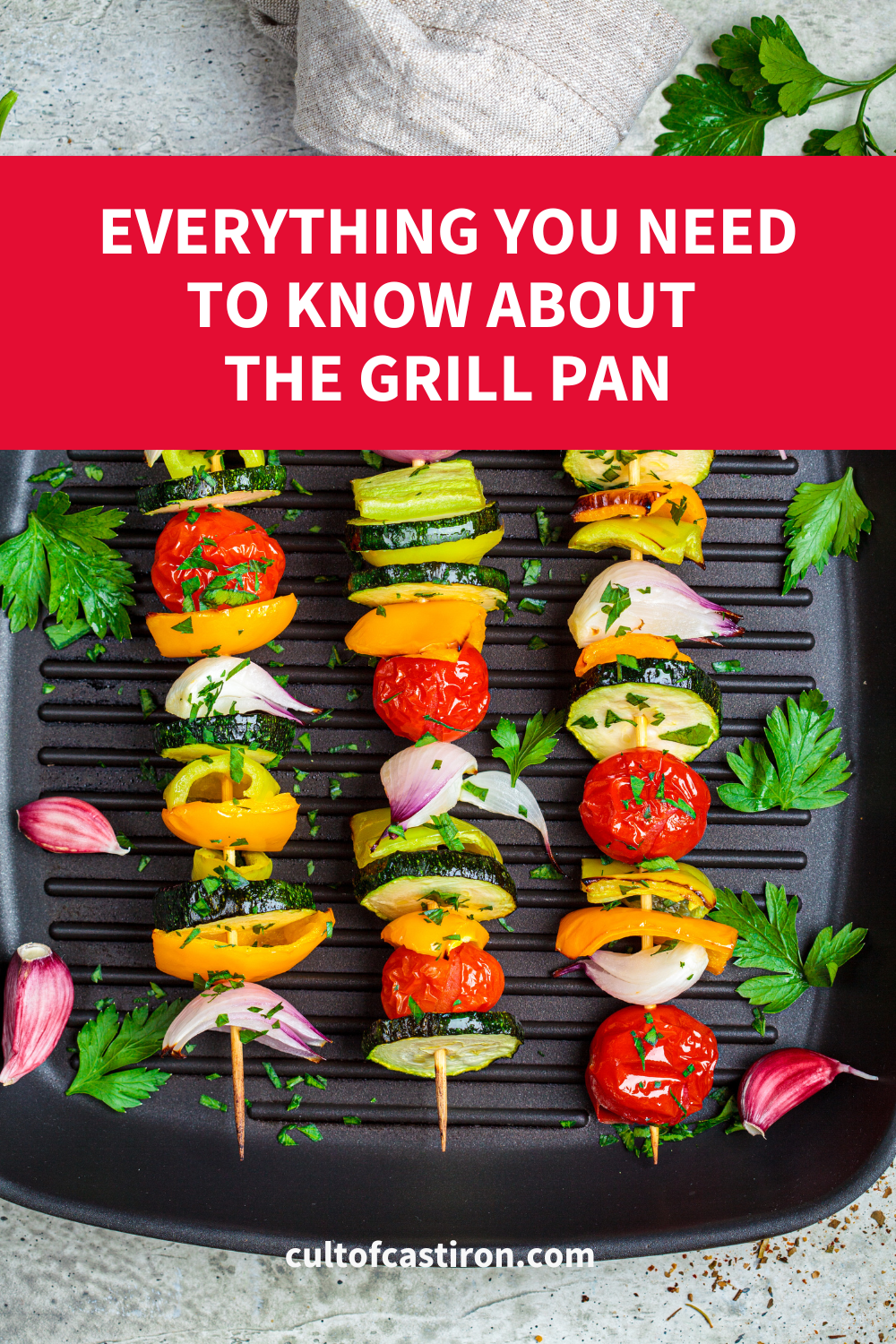Grilling can be fun. I mean, sure, the reward of delicious, charred, smoky food is a good motivator, but the real fun for me is the entire act of grilling: being outdoors, stoking the flames, feeling the radiant heat on your skin. Good times.
Alas, not everyone has access to outdoor space where smoke and soot won’t be much of an issue. Or maybe the weather has chosen not to cooperate, or you’re simply too lazy to set up the grill even on the best days.
Imagine grilling your favorite foods without stepping outside or dealing with unpredictable weather. That’s the promise of a grill pan, a handy kitchen tool that replicates the grilling experience indoors. Perfect for urban dwellers or anyone seeking a simpler grilling solution, a grill pan offers a practical way to enjoy grilled food year-round. But before you rush to buy one, it’s worth understanding what a grill pan truly offers. In this article, we’ll break down the essentials of grill pans, their pros and cons, and help you decide if one deserves a spot in your kitchen.
What Is a Grill Pan?
A grill pan is a specialized cooking tool designed to replicate the experience of outdoor grilling indoors. Characterized by its distinctive ridged surface, a grill pan allows food to be seared with grill marks while fat drains away, similar to cooking on a traditional grill.
The modern grill pan, specifically designed for indoor use on stovetops, started to become a kitchen staple in the 1960s and 1970s, as more people sought convenient ways to replicate the outdoor grilling experience indoors.
Typically made from materials like cast iron, stainless steel, or non-stick coatings, grill pans come in various shapes and sizes to fit different stovetops. But since I’m a strong advocate of cast iron cooking, we will focus on that particular type of grill pan instead.
Also Read: The 40 Different Types of Cast Iron Cookware and Their Uses – Explained!
The Pros and Cons of Using a Cast Iron Grill Pan
As with anything, grill pans have advantages and disadvantages. Here’s a quick TL;DR of its quirks:
Pros:
- Can be used indoors regardless of weather conditions.
- Can mimic grill marks and charred flavor similar to outdoor grilling.
- Can be used on gas, electric, and induction stovetops for versatile cooking.
Cons:
- Cannot fully replicate the smoky flavor of outdoor grilling.
- Can be bulky and take up significant storage space.
- Can be a challenge to clean due to food residue getting lodged in the ridges.
My main criticism of grill pans is that they cannot achieve the smokiness of real flame-grilled meats. The smoky flavor in grilling primarily comes from the combustion of fats, juices, and marinades that drip from the food onto the heat source. When these drippings hit the hot coals or flames, they vaporize and create smoke, which then envelops the food, infusing it with a distinctive, smoky taste. Additionally, when using wood or charcoal, the type of fuel itself contributes to the flavor, as different woods impart varying levels and types of smokiness. This interaction is difficult to fully replicate with a grill pan indoors. Essentially, you are just frying food in a pan, with fancy grill marks added to the mix.
Another gripe I have with the grill pan is that it lacks versatility—you can only use it for indoor grilling and nothing else. It takes up a lot of space (and money!) for something you may only use once in a while. If you ask me, instead of buying a dedicated grill pan, I’d opt for a reversible grill/griddle, especially those made for two burners. Does it take up more space in your kitchen? Yes, it does, but you get the benefit of having the capability to grill when you feel like it and the practicality of daily frying on the griddle.
While I know that I just grilled the grill pan (heh), I do understand that it may be the perfect solution for someone. so there is no harm in buying one.
How To Use A Grill Pan
Suppose that you’ve already bought one, here are some tips to maximize the use of your grill pan.
Preheat Properly
To get the best results from your grill pan, start by preheating it over medium-high heat for several minutes. A well-heated grill pan ensures even cooking and creates those coveted grill marks that enhance both the flavor and appearance of your food. For cast iron pans, regular seasoning is essential to maintain a non-stick surface and prevent rust.
Oil the Food, Not the Pan
When cooking, lightly oil the food rather than the pan. This prevents sticking and ensures that oil doesn’t pool in the ridges, which can interfere with the grilling process. Use a high smoke point oil like canola or grapeseed oil, which can withstand the high temperatures needed for grilling.
Master Cooking Techniques
Proper cooking techniques make a significant difference. Avoid overcrowding the pan, as this can cause the food to steam rather than sear. Cook in batches if necessary, leaving space between each item for even heat distribution. Additionally, resist the urge to press down on the food while it cooks, as this can cause juices to escape, leading to drier, less flavorful results.
Use liquid smoke
Using liquid smoke when cooking with a grill pan can enhance the flavor by adding that coveted smoky essence typically associated with outdoor grilling. A few drops can mimic the depth and complexity of wood-smoked meats, elevating your dishes and making up for the lack of natural smoke indoors.
Clean and Maintain Your Pan Regularly
After cooking, allow the grill pan to cool slightly before cleaning. For cast iron pans, use a stiff brush or sponge to remove food residue, and avoid soap, which can strip away seasoning.
Also read: Cast Iron Cleaning 101: Everything You Need To Know
Conclusion
While it may not fully replicate the smoky essence of outdoor grilling, a grill pan may be the perfect compromise for a lot of people. For me, I see the following as their prime target market:
- Apartment dwellers without outdoor space for a traditional grill.
- Small households or individuals who don’t need to prepare large quantities of food at once.
- Those who want to grill vegetables, tofu, or other plant-based foods indoors.
If you do not recognize yourself from that list, you may be better served with a reversible grill and griddle, or opt to use a classic grill instead. However, if convenience, versatility, and the ability to enjoy grilled flavors year-round appeal to you, a grill pan could be a worthy addition to your kitchen. It’s all about finding the right tool that fits your cooking needs and lifestyle.

Miguel is a cast iron enthusiast from Cavite, Philippines. He works in the digital marketing field as a content marketing strategist. On the side, he manages a small online bookstore and tends to his plants.

